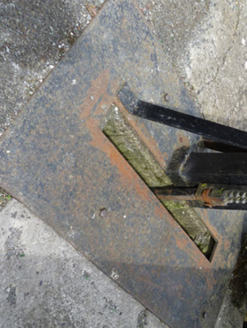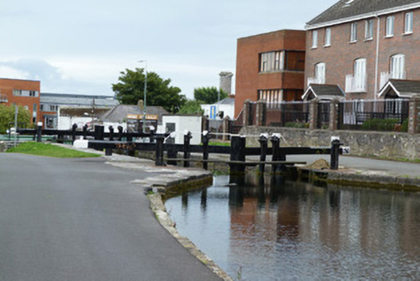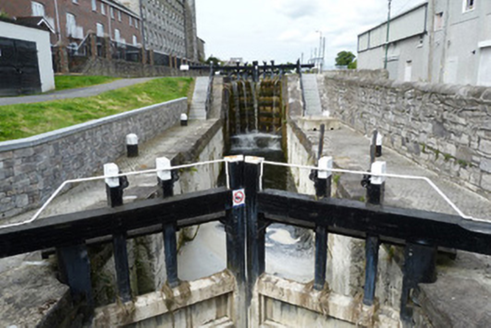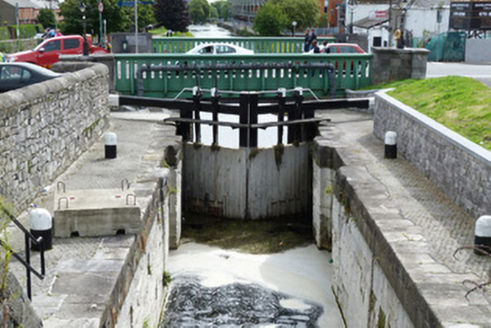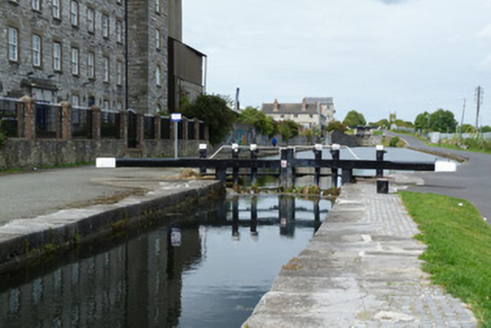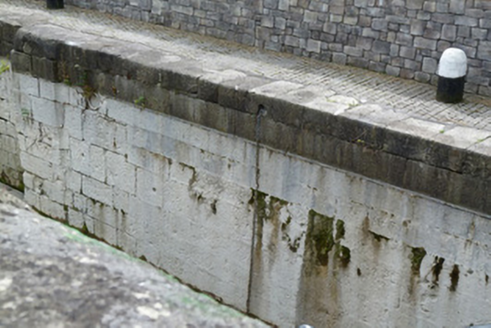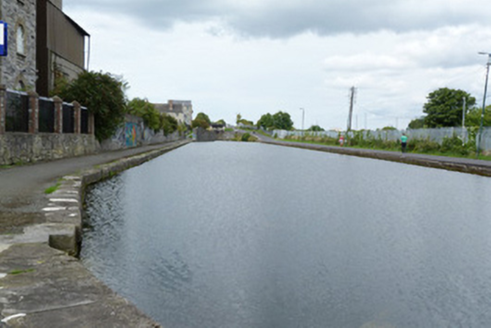Survey Data
Reg No
50060184
Rating
Regional
Categories of Special Interest
Architectural, Social, Technical
Original Use
Lock
In Use As
Lock
Date
1785 - 1795
Coordinates
315060, 236285
Date Recorded
24/08/2014
Date Updated
--/--/--
Description
Double lock, constructed c.1790, as part of Royal Canal. Ashlar limestone chamber walls with gate recesses, cast-iron mooring rings and dressed limestone coping. Replacement timber and mild steel lock gates with timber balance beams. Walls of lower chamber slope up to middle gate with replacement stone steps. Recesses for stop gates to east end. Walls to west end expand to form canal harbour with dressed limestone walls. Squared rubble limestone wall with segmental coping to north. Westmoreland Bridge located to east and former flour mill to southwest.
Appraisal
This lock was named for the Earl of Westmoreland, who laid the first stone at this site in 1790. The chambers exhibit good quality stonework, with attractive sloping edges to cope with the change in height between the lower and higher levels. One of a number of double-chambered locks on this stretch of the canal, it attests to the skills of the engineers employed by the company. The setting of the lock is enhanced by the presence of a number of other industrial structures, including Westmoreland (now Crossguns) Bridge, the adjacent railway bridge, the former North City Flour mills and a former railway siding. The Royal Canal Company was established in 1789 to construct a canal to provide freight and passenger transport between Dublin and the River Shannon.
